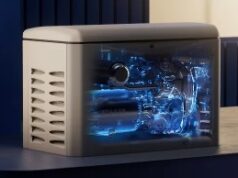 “I turned on the water in the shower and waited for 10 minutes. Warm water finally started flowing, however it never lasted more than a minute and alternated mostly with cool to cold water.”
“I turned on the water in the shower and waited for 10 minutes. Warm water finally started flowing, however it never lasted more than a minute and alternated mostly with cool to cold water.”
That’s the exact quote extracted from an online review of a guest who rated a hotel in Pennsylvania on Tripadvisor.com. The reviewer gave the hotel a rating of two out of a possible five. The site is full of similar comments from guests complaining about how long it took them to get hot water when they wanted to take a shower or wash their hands.
In the hospitality industry, when a guest turns on the hot water in their room, most wait patiently for the water to run a while to the proper temperature. Guests do not like to wait too long for their hot water according to the International Hospitality Association. In fact, they specifically address “the availability of hot water” as a factor for consideration in their quality standards and star rating systems that they set as the bar for multi-star ratings.
The cost to deliver hot water to insure customer satisfaction means the domestic hot water system must be balanced in a way that keeps the delivery time low. Until recently, that meant larger recirculating pumps, more recirculating flow, more wear and tear on your hot water system, and more cost.
Reduced Demand on Hot Water System
However, now modestly priced stainless steel control valves are available that use a temperature sensor and may be installed at the end points of domestic hot water systems. This inline fitting thermostatically controls a temperature set point typically in the 110 to 120 degrees Fahrenheit range, or at any specified temperature. The thermostatic signal subsequently controls hot water flow through the hot water system’s branches, which controls temperature to the individual endpoints: showers and other fixtures in the hotel or lodgings facility. Instead of using flow to control the availability of hot water on demand, it uses temperature, and consequently requires much less work and demand by the hot water system.
What does this mean for hospitality owners and operators? It provides greater efficiency, lower total costs, and a solution that promotes LEED projects and a “greener” building configuration.
A self-operating thermostatic valve controls flow in response to the temperature of the water flowing through the valve. This was developed specifically for domestic hot water applications. The underlying challenge for hotels and large facilities such as condominiums, apartment buildings, stadiums, hospitals and universities is that patrons want to turn on the hot water and would like it to be hot in some reasonably expected time frame, without a guest waiting a long time when they turn on a faucet for hot water.
A Reduction in Water Waste
For a guest who turns on the shower or sink and waits for hot water to flow to their liking, what happens to the water that runs out cold? It usually is wasted. Until it turns tepid and then hot. The shorter time this takes, the less waste there is. There is a cost to that waste—both environmentally and financially. Not only is it inconvenient for guests to wait for the hot water, but you are also wasting water that goes down the drain. How long someone waits in their hotel room for hot water is a very visible issue and one that lodging owners and operators strive to address by making the wait minimal. Often the developer’s drawings and blueprints for a new facility must include water conservation measures. If they can demonstrate that their design includes a water conservation measure such as a thermostatically controlled recirculation valve, it helps their plans to get approved sooner and more easily by planning authorities.
For an environmentally conscious lodging operator a thermostatic recirculation valve reduces water wastage, requires less recirculation, and ultimately reduces the facility’s bills. The lodging operator will have a reduced maintenance bill as it requires much less pumping and wear and tear on a hot water recirculating line, and also a reduced utility bill, because it does not require as much water and electricity to make the hot water available on demand.
For a building’s plumbing design, the benefits are great for LEED certification. LEED designers are attracted to a control valve that is thermostatically controlled as it improves the availability of hot water on demand.
The installation of a new domestic hot water system, whether it’s new construction, renovation, or other facilities modification that require manual balancing, can be a cumbersome ordeal. It often requires several persons to balance the flow rate across the control valve that ensures hot water is delivered to each end point such as a sink or shower in the individual room. Plus it takes up more billable time by the contractors to do this and just adds to the project budget during construction.
Cost Comparable to Manual Balancing Valves
Recirculating flow thermostatically eliminates the need to manually balance the system using flow rate through trial and error, and measuring pressure differentials and delivered water temperatures. Instead, upon installation it automatically and thermostatically controls recirculation based on the hot water temperature set point of the valves. These thermostatic recirculation valves’ cost is comparable to manual balancing valves.
Because other components don’t have to work as hard or be subject to unneeded wear and tear, it reduces the maintenance and performance burden of the circulating system. By thermostatically regulating the amount of water that returns to a hot water heater, it reduces the need to recirculate water to a heater. Guests love it because they have the right water temperature quickly and on demand.
Thermostatically controlled recirculation valves are used by many demanding facilities such as large stadiums, hospitals and hotels, where maintenance budgets are always under scrutiny, and the availability of hot water on-demand is important.
It eliminates waste, minimizes the amount of energy needed in terms of reheating the water, reduces maintenance and utility bills, and keeps customers happy. All these factors are inherent in the specification of a thermostatically controlled recirculation valve.
Nick Tallos is vice president, Engineering, Therm-Omega-Tech, Inc. Warminster, Pa. Therm-Omega-Tech is the developer of flow technology that utilizes thermostatic control rather than only volumetric flow, to achieve desired temperatures in domestic hot water systems.







